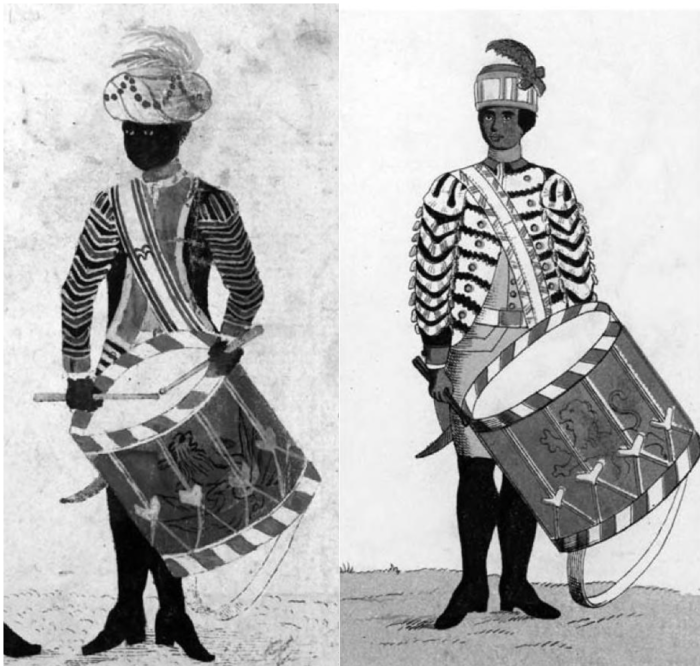
The Hessians were German soldiers from the state of Hesse-Kassel who fought on the side of the British army during the American Revolutionary War. Many of these men were former slaves who had run from their owners to join the Hessians, while some others were captured or bought by the Hessians and forced to serve. They were motivated primarily by the freedom they were promised for serving as soldiers. Many formerly enslaved black soldiers joined the ranks of the Hessians, and about one hundred of these men traveled back to Kassel with the Hessian troops, bringing some of their family members with them as well.
The exact number of black migrants to Hessen is uncertain because available records did not reliably report ancestry, and names were often changed in the course of migration. Names are an important tool for identifying ethnicity, but many of the formerly enslaved underwent baptism in Hessen, adopting Christian names in the process, as was common practice. Sometimes, the records state both a person’s original name along with their baptismal name. As an example, one church recorded the baptism of a man named Moritz Moses, who upon being baptized and entering the Hessian ranks was renamed Wilhelm after his German godfather. Most of the black Hessians that appear in the historical records were tambours, or drummers. This was viewed as a very respectable and favorable occupation, especially for a former slave to hold. This is evident by the high quality and detail of their clothes, as well as the respect they garnered by their peers and superiors. Many became tambours after travelling to Germany, as was the case for the previously discussed Moritz Moses, or Wilhelm. These soldiers and their families would live the rest of their lives in Germany as free people, having gained the favor and respect of many of their former comrades.
– Christian Musgrave (University of Missouri)